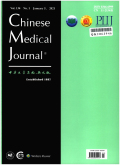Positron emission computed tomography/single photon emission computed tomography in Parkinson disease
Positron emission computed tomography/single photon emission computed tomography in Parkinson disease
摘要Parkinson disease (PD) is the second-most common neurodegenerative disorder. Its main pathological mechanism is the selective degeneration and deletion of dopaminergic neurons in the dense part of the substantia nigra and the damage of dopaminergic neurons caused by the abnormal deposition of a Lewy body, leading to a decreased dopamine level. Positron emission computed tomography (PET)/single photon emission computed tomography (SPECT) is a molecular imaging technology that can directly or indirectly reflect changes in molecular levels by using a specific tracer. With the research and development on the tracers of related enzymes for labeling dopamine transporter and dopamine receptor and for being involved in dopamine formation, this imaging technology has been applied to all aspects of PD research. It not only contributes to clinical work but also provides an important theoretical basis for exploring the pathological mechanism of PD at a molecular level. Therefore, this review discusses the application value of PET/SPECT in PD in terms of early diagnosis, disease severity evaluation, clinical manifestations, differential diagnosis, and pathological mechanism.
更多相关知识
abstractsParkinson disease (PD) is the second-most common neurodegenerative disorder. Its main pathological mechanism is the selective degeneration and deletion of dopaminergic neurons in the dense part of the substantia nigra and the damage of dopaminergic neurons caused by the abnormal deposition of a Lewy body, leading to a decreased dopamine level. Positron emission computed tomography (PET)/single photon emission computed tomography (SPECT) is a molecular imaging technology that can directly or indirectly reflect changes in molecular levels by using a specific tracer. With the research and development on the tracers of related enzymes for labeling dopamine transporter and dopamine receptor and for being involved in dopamine formation, this imaging technology has been applied to all aspects of PD research. It not only contributes to clinical work but also provides an important theoretical basis for exploring the pathological mechanism of PD at a molecular level. Therefore, this review discusses the application value of PET/SPECT in PD in terms of early diagnosis, disease severity evaluation, clinical manifestations, differential diagnosis, and pathological mechanism.
More相关知识
- 浏览7
- 被引5
- 下载8


相似文献
- 中文期刊
- 外文期刊
- 学位论文
- 会议论文



 换一批
换一批 换一批
换一批



